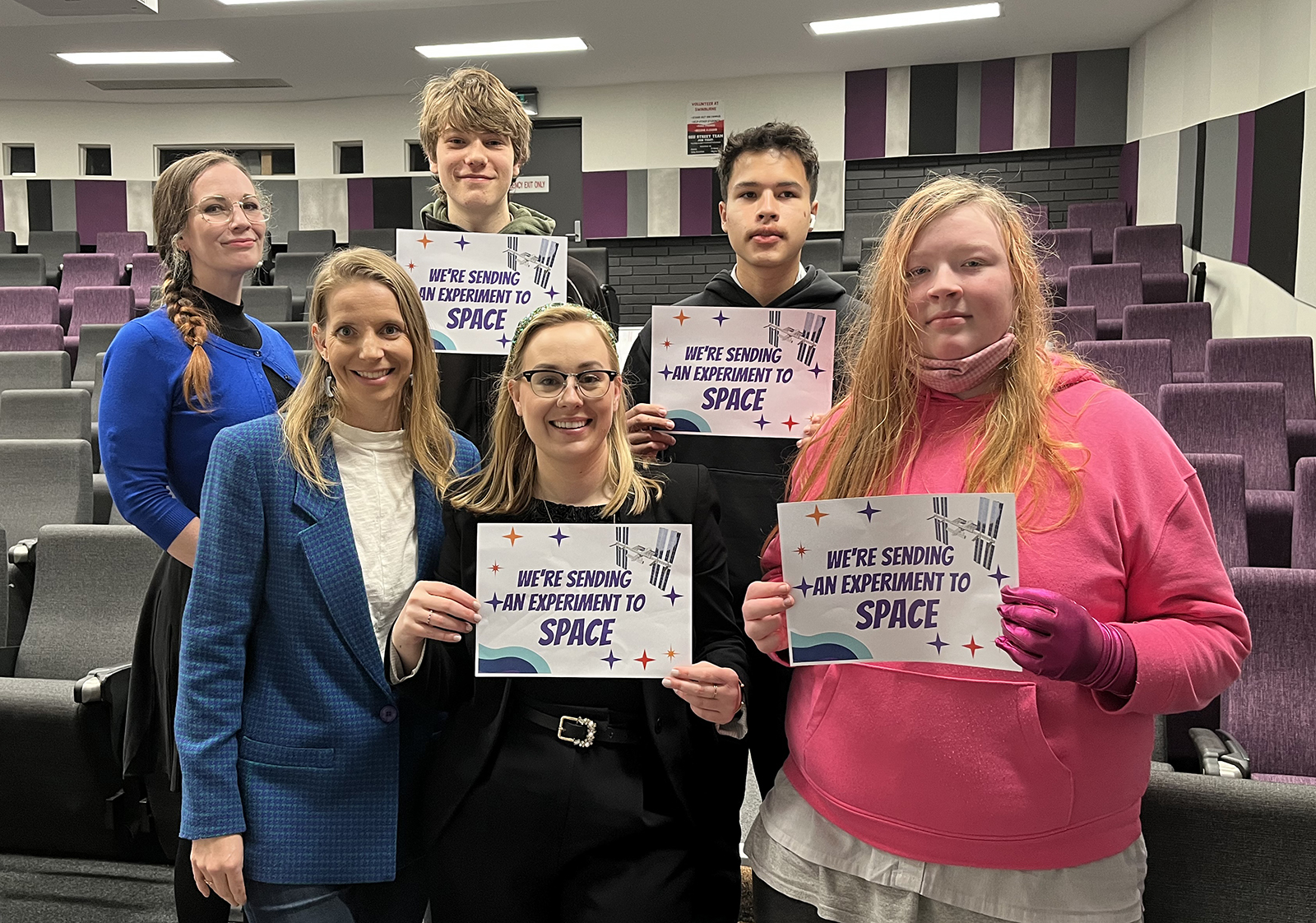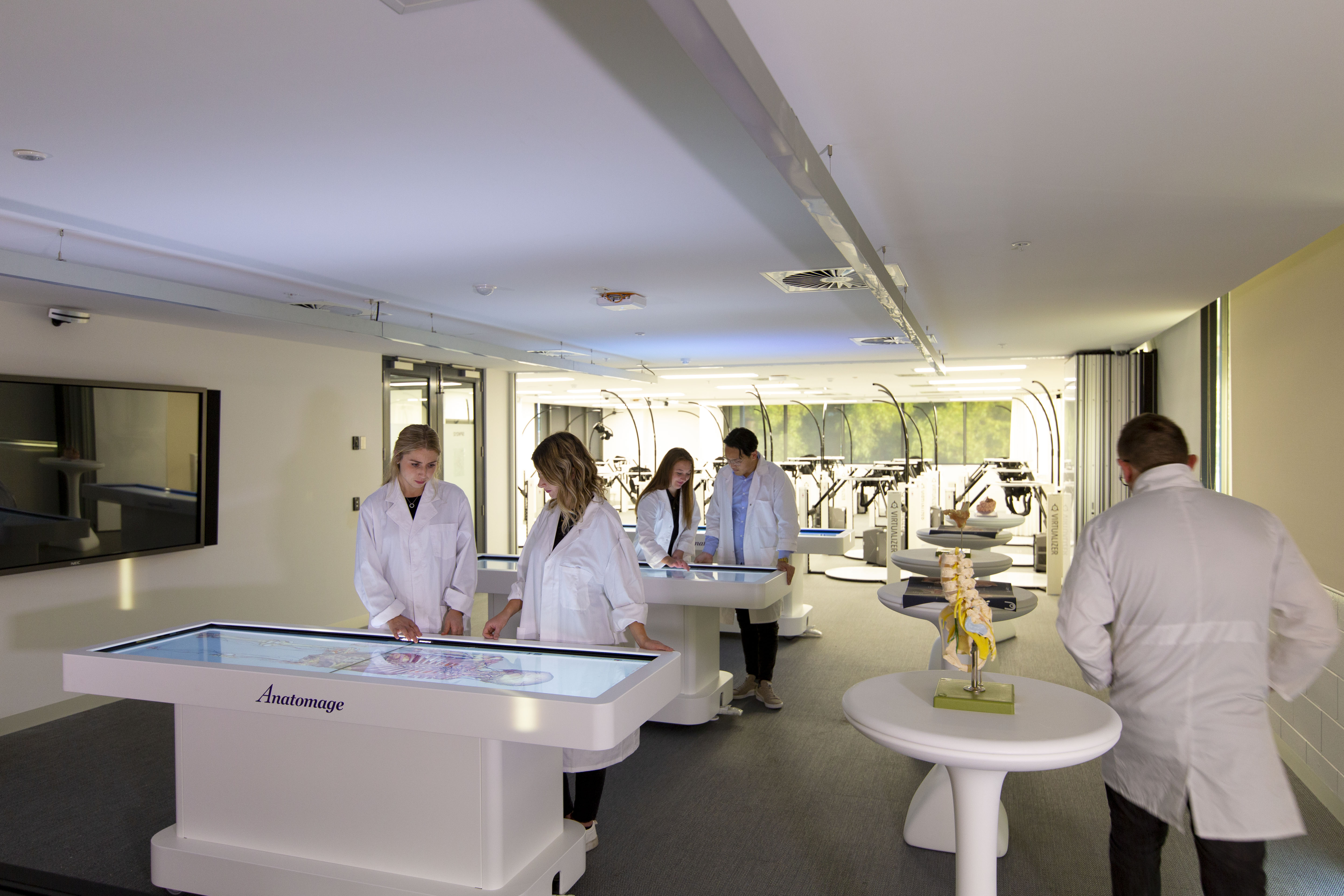High schoolers reach for the stars to design space mission

Clockwise from front left: Co-leader of Swinburne’s Space Technology and Industry Institute Dr Rebecca Allen, student mentor Erin Ross, Prahran High School students Javan Lacey, Inti Garzan Caceres and Pixel H, and SYSIC Program Leader Dr Sara Webb.
In summary
Twenty-two teams from 13 Victorian high schools competed in this year’s Swinburne Youth Space Innovation Challenge for the best space experiment
Students completed a six-week micro-unit to learn how to research and design an experiment for space before developing their own ideas
The winning team from Prahran High School will now work with Swinburne staff and student mentors on a microgravity experiment to be sent to the International SpaceStation (ISS)
With demand for space workers growing rapidly, Swinburne is continuing to help Australian high school students reach for the stars with direct access to space through the Swinburne Youth Space Innovation Challenge (SYSIC).
The 2023 program saw teams of students from Years 10 to 12 use their STEM skills and work with Swinburne mentors to design and pitch innovative space research ideas to industry experts.
Students completed a six-week micro-unit drawn from Swinburne’s Space Technology co-major to learn how to research and design an experiment for space before developing their own ideas.
The students came up with 132 unique ideas, resulting in 22 polished science communication pitches.
The winning team from Prahran High School pitched a space mission to revisit the Kuiper Belt, a disc-shaped region of icy objects that circles the outer Solar System.
Dr Sara Webb, who leads the SYSIC program, praised the students’ hard work over the unique 11-week program.
“The winning pitch was a truly exciting idea – very well researched and incredibly well communicated,” Dr Webb says.
“The judges found it was a very practical and relevant space exploration mission, demonstrating great research and planning and building from knowledge of planned space missions.”
Prahran High School teacher Tim Darby says, “The Swinburne Youth Space Innovation Challenge has been a great opportunity for students to pursue their passion for space, get a taste of university-style study and learn from experts at Swinburne.
“The students were well supported by their mentors who showed genuine interest in their ideas and shared their passion for space. As a teacher, I was proud of how well the students took on this challenge independently and produced exceptionally high-quality work on their own, with minimal input from me.”
The winning team now has the opportunity to work with Swinburne staff and student mentors on a microgravity experiment to be sent to the International Space Station (ISS) as part of the Swinburne/Rhodium Scientific payload.
Swinburne has previously led school programs that sent human teeth, chia seeds, magnetorheological fluid and yoghurt to the ISS.
The winners can also participate in a special W M Keck Observatory remote session at Swinburne’s Hawthorn campus.

All participating schools received special analysis kits with samples returned from a previous Swinburne payload that sent yoghurt into space. Each kit contains freeze-dried samples of the space yoghurt along with two samples from Earth. The students will grow their samples at school, investigate their properties and try to figure out which sample came from space.
New agreement signed with Space Centre Australia
Further building on Swinburne’s commitment to space research, the university has recently signed a Memorandum of Understanding with Space Centre Australia to explore opportunities for joint research and collaboration, staff training and student placement.
CEO of Space Centre Australia, James Palmer, says the new collaboration will lead towards the development of a diverse and sustainable space industry workforce.
"Working with Swinburne will provide Space Centre Australia with many long-term benefits in sustainable workforce development and this will also in turn provide opportunities for other organisations and institutions in primary, secondary, VET and external development to thrive and become a valued part of the wider space value chain."
-
Media Enquiries
Related articles
-

- Science
High schoolers reach for the stars to design space mission
Swinburne is continuing to provide Australian high school students with direct access to space through the Swinburne Youth Space Innovation Challenge.
Thursday 13 July 2023 -

- Science
- Technology
STEMM competition urges students to Start Talking
Swinburne’s Start Talking competition is nurturing the next generation of STEMM minds
Wednesday 16 November 2022 -

- Technology
- Science
- Engineering
How entrepreneurship saved Aussie lives when COVID-19 hit
Swinburne alum Jefferson Harcourt spearheaded the rapid development of thousands of ventilators early in the COVID-19 pandemic, saving countless lives
Friday 04 November 2022 -

- Science
National Science Week at Swinburne
To mark National Science Week, Swinburne celebrates the contributions of our scientists to the world of knowledge.
Thursday 12 August 2021 -

- Astronomy
Q and A with Professor Jean Brodie
The new Director of the Centre for Astrophysics and Supercomputing, Professor Jean Brodie talks about why astrophysics is important and shares insights on women and leadership.
Thursday 25 March 2021

